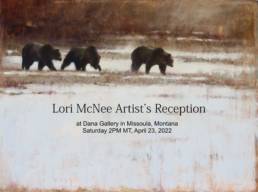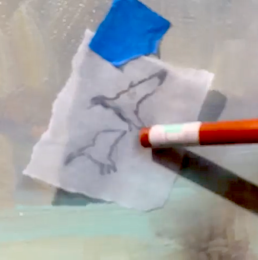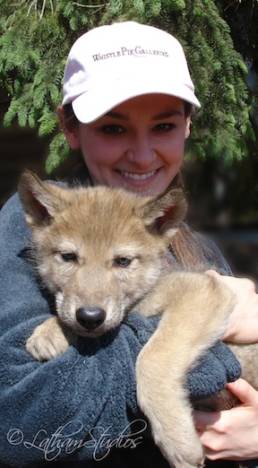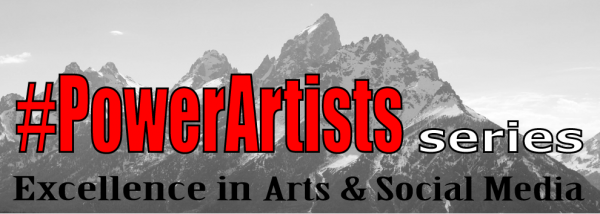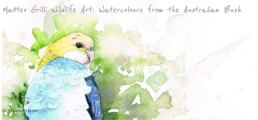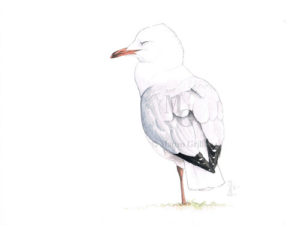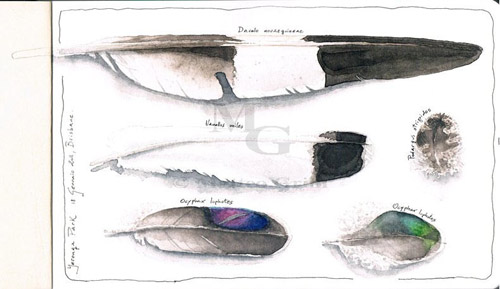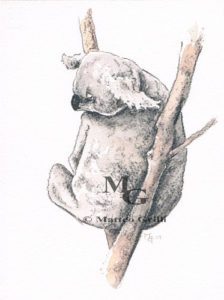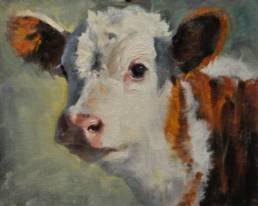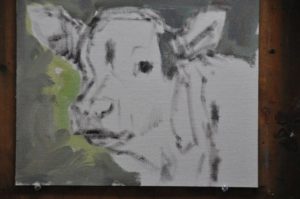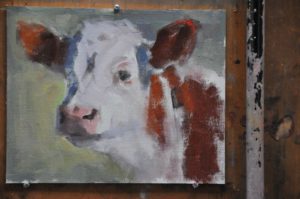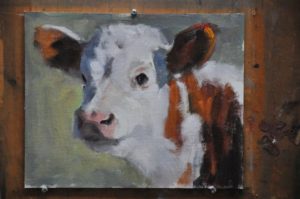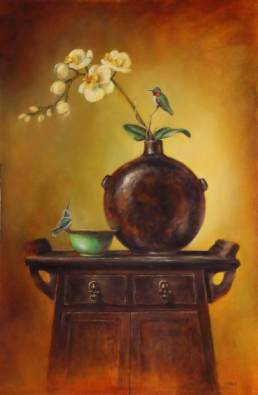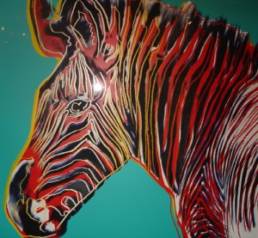Artist's Reception with Lori McNee at Dana Gallery
Artist's Reception with Lori McNee at Dana Gallery in Missoula, Montana
Dana Gallery
Missoula, Montana
Saturday, April 23, 2022
2PM Mountain Time
I've been working in my Idaho studio all fall and winter on a series of nature inspired paintings. This new body of work reflects my love of mountains, wild places and wildlife. I will be posting images in my portfolio soon.
Here's a sneak peek!
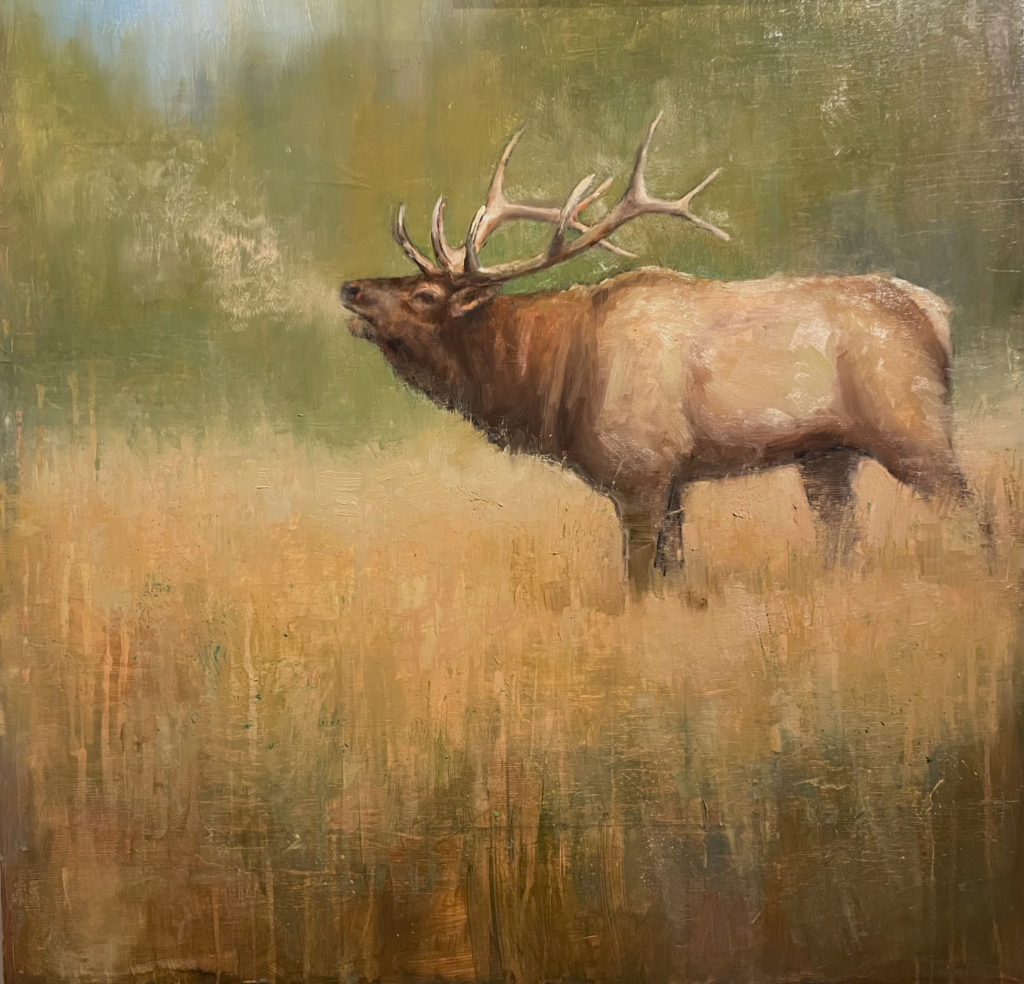
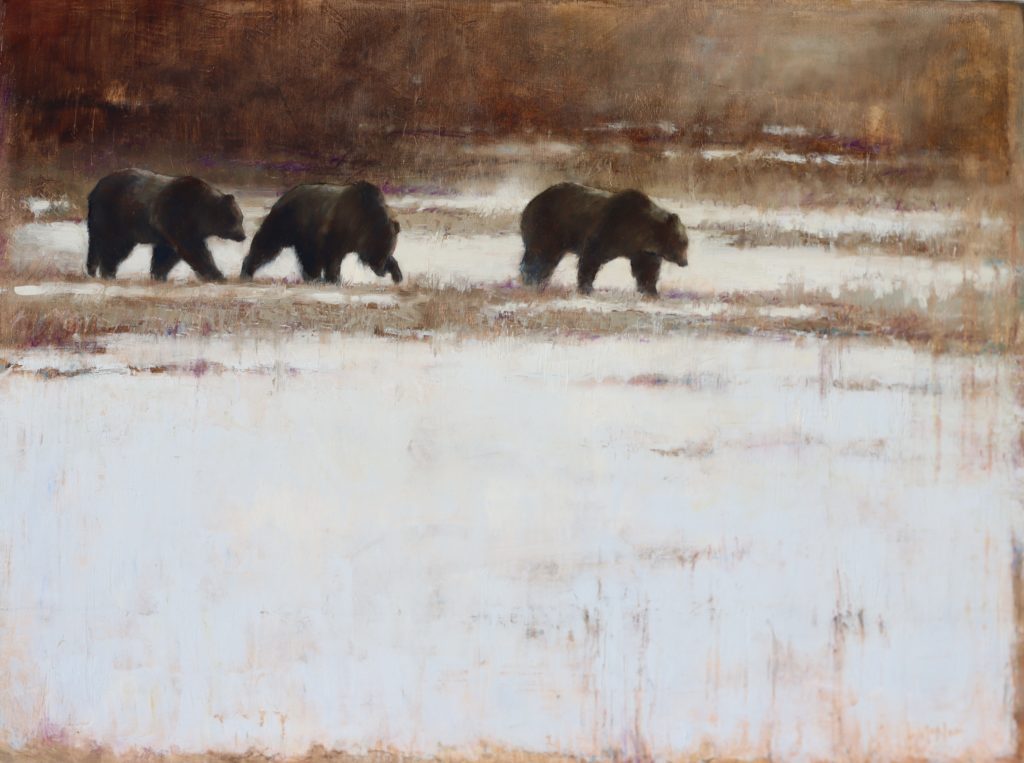
Stop by Dana Gallery and say hello if you are in the area!

A Helpful Trick for Drawing and Painting Small Details
You might enjoy this helpful trick for drawing and painting small details which really works!
It might kind of feel like cheating, but it isn't. It's just a shortcut. I borrowed this tracing paper trick from my encaustic painting techniques and tried it out on this oil painting and it worked!
Read on to see how to try it drawing and painting yourself. Be sure to scroll down to the bottom of this post to see my Instagram video which shows you how!
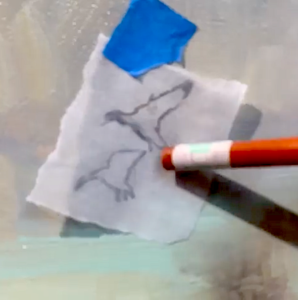
Here's the backstory
Recently, I was commissioned to create a duck-hunting oil painting.
It was a challenging commission for me. My client was very specific about what he wanted, for example... his recognizable Illinois duck blind and pond, blue skies, puffy white clouds, decoys to the left of the blind, the wind and water blowing from the left, mallard ducks landing from the right, and all in a 30x20 vertical format! 😅
Drawing and painting tiny details, especially in oil can be difficult. That's why this tracing paper shortcut really helped. It made it much easier for me decide upon the placement of the flying ducks.
Here's how it works
I drew the duck shapes ‘backwards ‘ onto a piece of tracing paper using a sharp charcoal pencil. Once I had a good design, I transferred the charcoal drawing onto the painting.
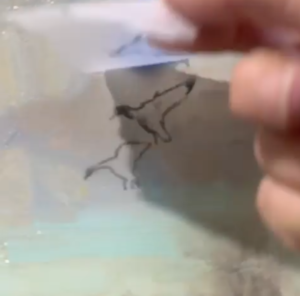
However, the painting needed to be almost dry to the touch for this to work. I used Cobra water-mixable oils and my favorite Quick Dry medium which really helped speed up the drying. It was dry to the touch in about 2-3 days.
Once the drawing was successfully transferred to the painting, I of course had to paint the ducks to give them life.
The second clip in the following video shows how I used "massing-in" to form the duck shapes. I then painted around the negative space to refine the shape of the ducks - and voilà! Lucky for me, my collector loved it!!
You can see the finished painting on my site, www.LoriMcNee.com.
https://www.instagram.com/p/B2b8ktrHVXo/?utm_source=ig_web_button_share_sheet
#PowerArtists Interview with Wildlife Painter Rebecca Latham
Wildlife artist, Rebecca Latham and I use to show at the same gallery in Jackson Hole, Wyoming, so it has been especially nice catching up with her on Twitter. Rebecca is a young, rare talent who comes from a family legacy of world renowned wildlife artists.
I am so impressed with Rebecca's love of nature and her attention to detail that is reflected in her beautiful paintings and her tweets! It has been fun watching this artist embrace and 'rock' the art world using social media and I am thrilled to introduce her to my readers!
“Power Artists are the social media ‘rockstars’ of the art world! Not only are they talented creatives, but they understand how to harness the power of social media and use it to promote their art careers. #PowerArtists are inspiring and freely share their knowledge with others.”
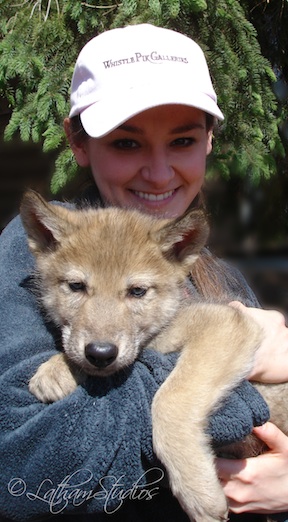 Rebecca Latham is known for her detailed realism in watercolor, a style identified as traditional miniature painting, specializing in wildlife as well as nature and occasionally portraits. She is a signature member of numerous fine art societies. Her award winning paintings have been shown internationally in museums, including the Smithsonian, respected galleries, as well as collected in United States, Canada, England, France, Scotland, Australia, and Germany. She supports many wildlife organizations through her work.
Rebecca Latham is known for her detailed realism in watercolor, a style identified as traditional miniature painting, specializing in wildlife as well as nature and occasionally portraits. She is a signature member of numerous fine art societies. Her award winning paintings have been shown internationally in museums, including the Smithsonian, respected galleries, as well as collected in United States, Canada, England, France, Scotland, Australia, and Germany. She supports many wildlife organizations through her work.
Describe a typical day in the life of a #PowerArtist
I get up, grab a cup of coffee, and head to the studio/office. I start off by tuning in some calming classical or instrumental jazz, checking emails and messages and take care of anything pressing. I try to have a to-do list made up the night before so I can easily see what I need to accomplish that day and pending deadlines.
At that point, I usually grab something for breakfast and get settled in front of my easel/drafting table and start working. When working on a painting, I often become very focused or in flow and lose track of time, so I don't have pre-set breaks. When I do take breaks, they may consist of snapping a photo of my in-progress work, hopping on the Internet to check things, grabbing a bite to eat, and/or taking a nature walk/run, etc.
My day continues like this until I have painting fatigue or some difficulty remaining focused, which is when I jot down any notes I want to recall quickly when I return, and retire for the evening.
![imperialgreathornedowl5x7RL[1] great horned owl oil painting](https://lorimcnee.com/wp-content/uploads/2011/06/imperialgreathornedowl5x7RL11.jpg)
Give an example of how you use social media to promote your art business
First off, I'd like to thank Lori for asking me to participate in her series. Her site really does offer a wealth of information to artists, in addition to being a very talented and successful woman in her own right. I'm very pleased to be able to contribute.
I tend to at least have a presence on most social media venues. I know a number of artists and individuals that like to stick to just a few, if it works well for them, that’s great. I like to see the whole sphere of social media web as a group entity of it’s own.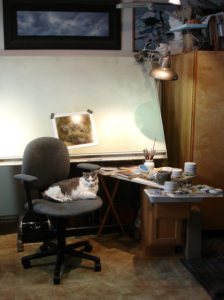
In showing my work online, I am really, basically, placing my artwork (and information about my art) in easy to access locations for my supporters to see. Those individuals are very busy, and gravitate toward a network (twitter, facebook, etc) that fits their communication style, so by participating in numerous venues of social media, I find that I am able to connect and have my artwork or information available to each of them more easily. Then, of course, those that are particularly drawn to something, can share the item with their friends or colleagues in various ways.
For example... If I create a new work for a show, I may create a blog post (or several on the topic), upload an informational blip on Facebook, links are then posted to my Twitter and LinkedIn, and list the new show in my events for those subscribing by rss. I also love being able to interact with those following my work.
If you could meet any artist: past, present, or future, who would it be and why?
Leonardo Da Vinci. Primarily because of his well-rounded balance of artwork and science, the culture he created it in, as well as his intrigue. I would love to listen to his thought process and approach to challenges.
If your art could be displayed anywhere in the world, where would it be and why?
That is difficult to say. I enjoy showing in professional venues, various museums and respected galleries. But I also enjoy, sometimes more so, the showing in a smaller location or private collection. Hearing how just viewing my work has impacted them, even brought them to tears, is incredibly humbling. I am at a loss for words in those situations, but so appreciative that something I have created has such meaning for someone else. So, I suppose in a short statement, I simply would want my work shown where it has the most value to it's viewers, wherever that may be.
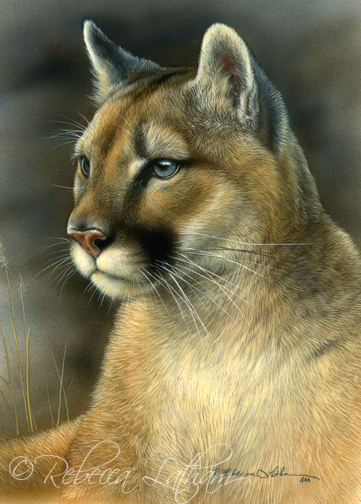
What sage advice would you give an artist who is just starting out in his/her career?
I’m not sure that I have sage advice, but the most important advice I can give is to work hard. There aren't really any shortcuts and an 'overnight success' rarely stays successful. Follow your heart. Don't allow others to direct you from your vision. Be persistent.
Whether you are wildly successful or dealt strong blows, both of which can be a hindrance to an artist, don't be swayed off course from becoming what you want to be. Don't be afraid to ask questions, continually learning, and reaching to expand yourself. Your knowledge gained will translate into all areas of your career and influence your work.

As a #PowerArtist, what do you do to ‘give back’ or ‘pay it forward’ to your community
Wildlife, nature, and environmental causes are very important to me, as well as several other charities. I regularly donate reproductions of my work, usage rights, as well as original works to support those causes that I believe in. I have really been blessed with opportunity and support on this path as an artist. I’m very grateful to have the ability to pass along the support that I can to those that need it.
*****
Rebecca, thank you for sharing your powerful and inspiring thoughts with us. You are such a dedicated artist and I am so happy for your successes. ~Lori
Please visit Rebecca's website, blog and social media sites...
http://www.lathamstudios.com/rebeccasblog/blog
http://www.lathamstudios.com
https://www.facebook.com/rebeccalathamart
https://twitter.com/#!/rebeccalatham
http://www.youtube.com/rebeccalatham
http://www.linkedin.com/in/rebeccalatham
Check out these helpful books that teach you how to photograph and/or paint wildlife art! Click on them for more information...



Here are a few other articles you might enjoy:
3 Reasons to Start a Creative Blog for Your Business
Turn an Altoid Box into a Mini Watercolor Travel Set
Watercolor Painting Tips & Materials for the Beginner
How to Paint Iridescent Bird Feathers and Make them Glow
Boost Productivity with Short Studio Sessions
How to Overcome 3 Common Barriers to Success as an Artist
7 Creative Ways to Approach an Art Gallery for Representation
…oh, and I hope we meet on Facebook and Twitter! ~Lori
Wanderings in the Australian Bush with Wildlife Artist Matteo Grilli
Discovering talented professional and emerging artists to share with my readers is one of the great joys of my blogging experience. This week, it is a pleasure to introduce you to a promising, young wildlife artist, Matteo Grilli.
Born in Italy in 1984, but now living in Brisbane, Australia, Matteo and I met on Facebook. Each week I ask my fan page members a simple question, "What's on your easel?" Matteo posted a watercolor bird portrait of an Emu, from his Australian wanderings and travels. This especially caught my attention since I had just returned from Australia and New Zealand myself.

Okay, I have to admit that I humbly refer to myself as an 'arm chair naturalist' from time to time, and I have a weakness for wildlife art journals and sketchbooks. Matteo's art reminds me of my own wildlife roots, back when I painted with the likes of Robert Bateman, John Seerey-Lester, Carl Brenders and Guy Coheleach. I also marveled at the paintings of New Zealand wildlife artist, Ray Harris Ching. These wildlife art giants all kept (and still do keep) copious journals and trained us to do the same.
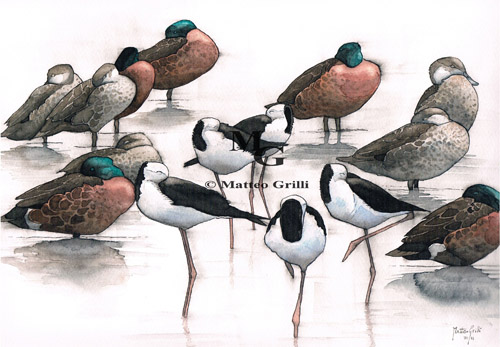
A generation later, Matteo is following a similar path. His love of birds and animals are carefully yet artistically rendered and recorded in the journal pages, which he fills with the flora and fauna of his Australian wanderings in the bush, wetlands, beaches, parks and gardens. Matteo explains that it is his ultimate goal is to draw attention to the beauty of Nature, to inspire its contemplation, discovery and understanding, therefore, its respect and conservation.
"What makes birds and other animals so inspiring to me, other than their sheer, inaccessible beauty, is their fleeting essence and the urge to preserve their wildness. My artistic research reflects my will to raise awareness about Nature’s beauty, to inspire its contemplation and discovery as well as inspiring action for its protection and conservation." ~Matteo Grilli
Matteo's Art Making Process:
- Once back in the studio, Matteo recollects the experiences and feelings through his journals filled with drawings, colors, writings and photographs.
- Matteo strives for precision and detail, yet recognizes the importance of what is left untold, unseen and vague.
- The fresh, fluid features of watercolors, with their watery-airy transparency perfectly convey his emotions toward the subject.
- Matteo relies on the bright white of the paper which becomes space, light, air and lightness.
- Matteo is fascinated by the simplicity of Ancient Cave Art, Chinese and Japanese art.
- The artists who influence Matteo's work include, the Dutch nature artist Marjolein Bastin and two bird artists Louis Agassiz Fuertes and John Busby.
Matteo is actively involved in bird and environment conservation and is a member of the Italian Association for the Protection of Birds -LIPU, as well as Wildcare Australia, a non-for profit organization located in South East Queensland dedicated to the rescue and rehabilitation of native wildlife.

To learn more about Matteo please check out his blog, it is one of the most unique and creative art websites I have seen. A visit to his blog leaves his readers with the feeling of having just flipped through the beautifully illustrated pages of his wildlife journals, you will not be disappointed. http://matteogrilli.blogspot.com/
Thanks for stopping by. Any encouragement in the comment section from fellow artists or art enthusiasts will be greatly appreciated by Matteo. ~Lori
*****
PS. You might enjoy this wonderful North Light instructional book, Keys to Painting Birds and Feathers
PSS. I'd love to meet on Facebook and Twitter! ~Lori (or if you want to see my paintings)
If you enjoyed this article, please check out these:
How to Choose Better Subject Matter for Your Art
6 Tips for a Stress Free Sketchbook
A Dynamic Animal Oil Painting Demo by Phil Beck
Bringing the Still Life to Life: A Painting Demo by Master, Jeff Legg
How to Paint Iridescent Bird Feathers and Make Them Glow (video)
How to Paint Animal Fur (video)
Top Paintbrush Cleaning Tips from the Pros on Facebook
Watercolor and its Materials for the Beginner
To meet some great and inspiring artists, check out The PowerArtists Interview Series
Stay tuned for an upcoming article that highlights the bird art of John Perry Baumlin!
#PowerArtists Interview with Children’s Book Illustrator Melody Lea Lamb
Genuine individuals like Melody Lea Lamb help to make the competive art world a kinder place. Melody is an avid social media user who's positivity is infectious. She is an award winning children's book illustrator who also specializes in miniatures art of animals as wells as fantasy. She works primarily in colored pencil, watercolor and India ink.
Recently, Melody won the 1st Place, Gold Medal in the 2010 Next Generation Indie Book Awards for her illustrations in a children's book, Moonlight Memoirs. Melody lives in New England, United States along with her husband and two teenage kids. It is a pleasure for me to introduce you to Melody Lea Lamb.
“PowerArtists are the social media ‘rockstars’ of the art world! Not only are they talented creatives, but they understand how to harness the power of social media and use it to promote their art careers. #PowerArtists are inspiring and freely share their knowledge with others.”
"Is Melody Lea Lamb an artist who can also talk to animals—or a lover of fur and paws who also draws like a dream? Her fans can’t tell where one gift ends and another begins. All they know is that the combination has led to some pretty interesting life circumstances, from teaching art in a chicken coop to composing watercolors on horseback. And that may also be why Melody’s renderings of fairies and forest vistas seem as alive as her portraits of horses and cats. All creatures great or small, real or imaginary, inspire Melody’s brush." ~Written by Melody's sister.
Describe a typical day in the life of a #PowerArtist:
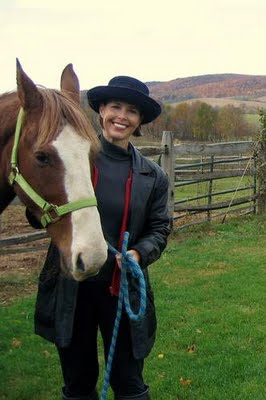
My typical day begins with a 5:30 wake up and coffee by the wood stove with hubby before he heads off to work. Then I multi-task between social networking on Twitter and Facebook, and getting my teenagers up, fed and delivered to their different schools.
My dog and I then usually go for a long run (I'm training for my second "Run for the Critters" race in May) and I get down to work on my business.
Normally the first order of my business day is packing and shipping art. I really enjoy sending out my art and take extra time to make each order special with extra goodies enclosed in the packages.
I've found that I absolutely must schedule my work day (I use Google calendar) and then follow my schedule to the best of my ability. I schedule time to paint, to work on my various online shops and time help promote my Art for Critters group.
Early afternoon is all about my kiddos, dinner, homework, etc. Finally, I wrap up my day with quiet time on the couch, cats and laptop purring (more social networking) and hubby beside me catching the news.
Give an example of how you use social media to promote your art career:
I've found a combination of providing valuable information (on Twitter and Facebook) with thoughtfully and sparsely placed self promotion works very well for me. Its about 90% value, assisting and promoting others, interesting links...then 10% self promotion!
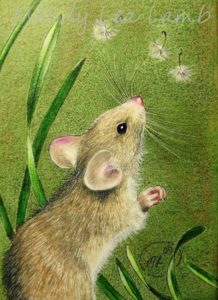
If you could meet any artist: past, present, or future, who would it be and why?
Claude Monet and Robert Bateman Because I adore their work for two very different reasons!
- Monet because I respect and admire his ability to capture the feel of his beautiful gardens in the loose vibrant impressionism.
- Robert Bateman because I think he is one of the greatest wildlife artist of his time.
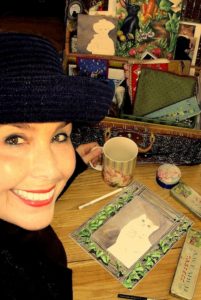
If your art could be displayed anywhere in the world, where would it be and why?
I thought a lot about this. Since I am painting mostly tiny little works of art that are affordable and easily kept-displayed, I'd like one piece of art in the home of every interested person on the globe!
What sage advice would you give an artist who is just starting out in his/her career?
Follow your heart, don't get discouraged, keep an open mind, and stay humble!
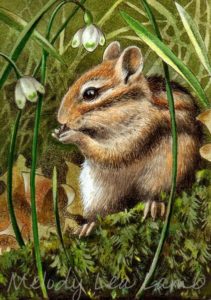
As a #PowerArtist, what do you do to ‘give back’ or ‘pay it forward’ to your community?
Top of the list for my "pay it forward" is the Art for Critters group that I co-lead. We are 35 artists who have donated $50,692 to animal charity since 2006. I also am training to run my second "Run for the Critters" which I will do in May. Last year I personally raised $1500. for animal charity on my Race for the Critters! I also delight in promoting other artists which I try to do daily on Twitter.
*****
Thank you to Melody for sharing her inspiring story that embodies the essence of a true #PowerArtist! ~Lori
Be sure and visit Melody's websites, blogs and social media networks:
http://www.melodylealamb.com/
http://www.miniatureanimalart.com/ (Gift Shop)
http://melodylamb.blogspot.com/
http://www.etsy.com/shop/mllamb47 (Esty)
http://twitter.com/MelodyLeaLamb/
http://www.facebook.com/MelodysArt
You might like to check out these other great articles and interviews:
A Dynamic Animal Portrait Oil Painting Demo by Phil Beck
How to Paint Iridescent Bird Feathers & Make Them Glow
Tips for Painting Animal Fur: Monkey Demo
#PowerArtists Interview with Muralist & Community Activist, Kelli Bickman
#PowerArtists Interview with Maritime Painter, Annie Strack
#PowerArtists Interview with Painter and Sculptor, Robert Girandola
Why Artists Should use Youtube Video Marketing
#PowerArtists Interview with Multimedia Painter, Robin Pedrero
5 Common Traits of Successful Artists
The Importance of Value and Tone in Painting
Selling Art on Facebook: One Artist’s Way
PS. Let’s meet on Facebook and Twitter!
PSS. You might like to check out these great instructional books by North Light Books: Watercolorists Answer Book and Keys to Painting Fur & Feathers
A Dynamic Animal Portrait Oil Painting Demo by Phil Beck

It takes a lot of talent, technical ability and artistic confidence to make a painting demonstration look simple.
Recently, Phil taught an "Animal Workshop" at the Scottsdale Artists School in Arizona. The calf painting to above and the demonstration below are demonstrations from his class. I thought you all would enjoy seeing Phil's straightforward approach toward teaching, which needs little explaining. (A few of the pics are a bit blurry).
Phil obviously understands the anatomy of an animal. In this first step, he confidently decides the placement of the portrait and draws the basic shape of the calf head.
Phil continues oil painting by thinly blocking in the background colors. The greens will be a natural compliment to the oranges in the calf hair.
Phil continues blocking in the light, shadow and coloration of the calf. Notice how Phil uses the background color to define the shadow of the calf which adds to the congruity and harmony of the painting.
More, refining the light and defining the shadow. Phil lightens the background around the muzzle of the calf which strengthens the shapes and design.
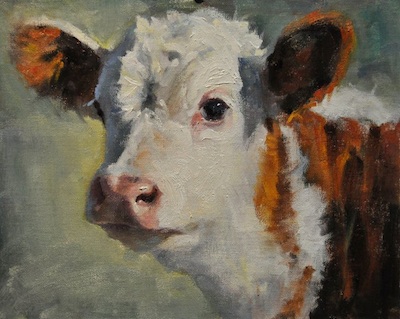
With his painterly approach, Phil keeps his brushwork fresh and dynamic. Notice how he keeps the shadows thin and translucent while building up the impasto effect in the whites of the calf. The carefully placed brushstrokes helps to sculpt the shape and structure of the head and suggest the calf hair.
For more great animal demos, check out my Fine Art Tips - Painting Techniques & Professional Advice from 24 master artists available on Amazon, at Barnes and Nobel or from the North Light Shop!
*****
Phil Beck started his career as a successful illustrator in Chicago and was drawn to the world of fine art in 1980 when he arrived in Scottsdale, Arizona. A colorist with a painterly style who stresses harmony in his artwork, Beck studied at the American Academy of Fine Art in Chicago. He is a versatile artist who specializes in figurative work. Beck’s love for animals is apparent in his work, and animals appear in most of his paintings as he brings them to life on canvas. His predominant medium is oil, but he is also known for his speed and accuracy in his beautiful drawings. He paints full time in his Scottsdale studio, but is never too far from the desert he loves. He has been featured in Southwest Art, Art of the West, Western Horseman, and several other publications. He is represented by West Lives on Gallery in Jackson Hold, Wyoming and Mountain Trails Gallery in Sedona, Arizona.
Thank you Phil for sharing your beautiful demonstration with us! ~Lori
Please say hi to me on Twitter and my FineArtTips Fan Page.
You might enjoy some further reading:
How to Paint Iridescent Bird Feathers and Make Them Glow (video)
How to Paint Animal Fur (video)
Still Life Painting: Create Your Own Small Universe
How to Paint Iridescent Bird Feathers & Make Them Glow
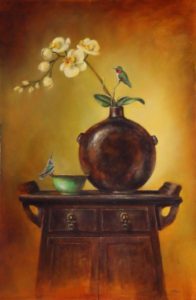 Often, I get asked how I make my paintings and birds seem to glow. A few months ago, I made a video while painting this still life painting, "Jeweled Visitors" and decided to edit it down into a short clip to illustrate how I paint iridescent bird feathers.
Often, I get asked how I make my paintings and birds seem to glow. A few months ago, I made a video while painting this still life painting, "Jeweled Visitors" and decided to edit it down into a short clip to illustrate how I paint iridescent bird feathers.
This is a quick little flick, but I hope it helps you understand how to make your bird feathers look iridescent and make them glow!
Here are a few tips to remember:
- To give the illusion of light, use very little white. White makes subjects look 'chalky', not light! I use cadmium yellow with a dash of white most of the time.
- Use warm notes against cool tones to help the illusion of light.
- Use a variety of different colors against each other. For example, a warm blue (ultramarine blue) and cool blue (cobalt blue) next to each other make the blues sparkle.
- Use these brighter colors next to earth tones.
- I use an old brush to help me paint the feathers...
- You might like this book > Keys to Painting Fur & Feathers
You might like to see My Tips for Painting Animal Fur, or
The Importance of Value and Tone in Painting
The Secret to Painting 'White' Objects
On My Easel #3: From Lemons to Lemonade
On My Easel #2: The Challenge of Painting the Illusion of Blown Glass
On My Easel: Still Life Oil Painting Demo #1
Save Money. Learn How to Gesso a Hardboard Panel for Painting
Bringing the Still Life to Life: A Painting Demo by Master, Jeff Legg
The New Still Life Paintings of Lori McNee
Top Paint Brush Tips from the Art Pros on Facebook
And here is a great book by North Light Books you might like: Keys to Painting Fur & Feathers
Andy Warhol & Nature Pop Art
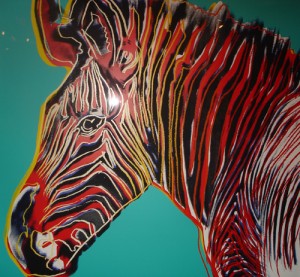 Although Andy Warhol is best known for his Pop Art, but believe it or not he had an interest in nature that began as a child.
Although Andy Warhol is best known for his Pop Art, but believe it or not he had an interest in nature that began as a child.
In his youth, Warhol drew animals in science class, kept a flower garden in the family’s yard, and sketched at local conservatories. In college, he frequented the zoo in Highland Park to draw and study animals.
Warhol’s series of ten silk-screened images of critically endangered animals showcase not only Warhol’s concern for nature, but also his dramatic use of line and color. Warhol's Endangered Animal series sought to make celebrities out of these wild creatures to bring attention to their plight.
As I was browsing the museum gallery, I came across several works that looked like they had been styled after Andy Warhol. As I looked closer, to my surprise, the paintings were indeed his.
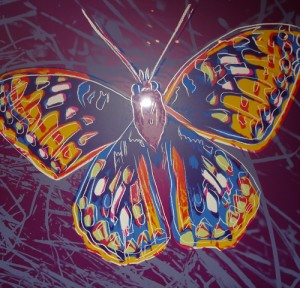
It was really fascinating to see another period Warhol's work which I did not know existed. Until I saw those pictures, I thought he just did his 'normal things': camo screen prints, famous people prints of Marilyn Monroe, John Wayne, Elizabeth Taylor… etc. Warhol's inspiration for this series was endangered species at that time. I am glad to see the traditional museum could respect his work as something to do with nature, and it was refreshing to see this series was NOT in some pop art museum.
 Warhol is an inspiration for me. I love his originality, his messages, and his attention to color. I think this series says a lot. The images are screen printed, but colored on top of with colored pencil and paints.
Warhol is an inspiration for me. I love his originality, his messages, and his attention to color. I think this series says a lot. The images are screen printed, but colored on top of with colored pencil and paints.I believe there is a hidden metphor in Warhol's work: the screen printing symbolizes the man made and the machine… and how we are killing off our natural world's beauty with our own designs. I think Andy is trying to tell us, in this own way… To simply stop killing our world. www.riotforquiet.com
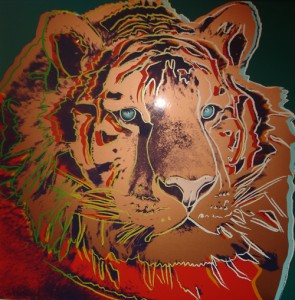 Here are some articles you might find interesting:
Here are some articles you might find interesting:Check out Lori's art travels
Graffiti: Vandalism or Art?
10 tips to Bring Visitors to Your Open Studio or Art Fair Booth
Learn the Two Biggest Mistakes Artists Make with Social Media
One Simple and Effective Way to Show the World You are a Pro
10 Important Things Every Aspiring Artist Should Know: Part 2
Brand Yourself as an Artist on Twitter
How to “Jump-Start” Your Art Career!
When Are You Ready to Call Yourself a Professional Artist
Do Artists Need Commercial Gallery Representation?

